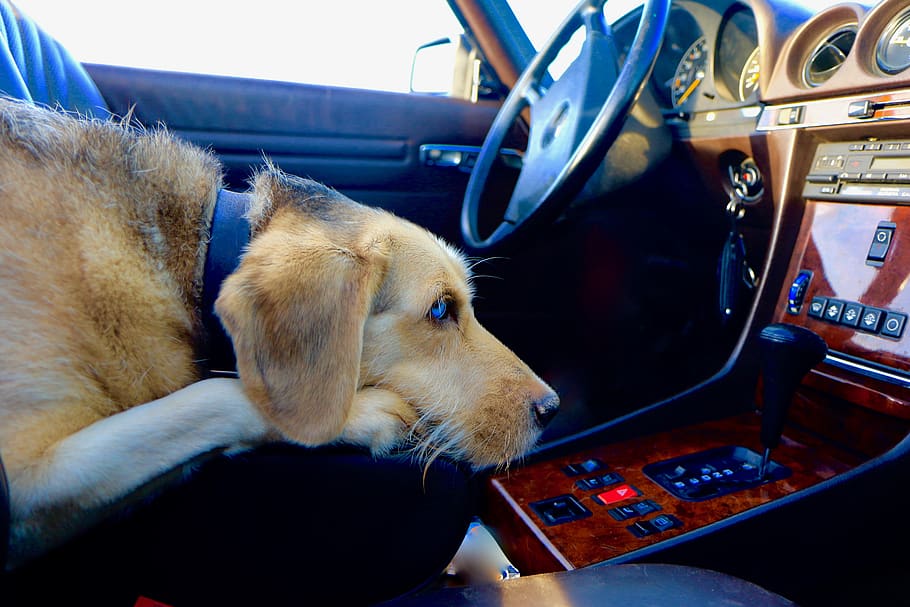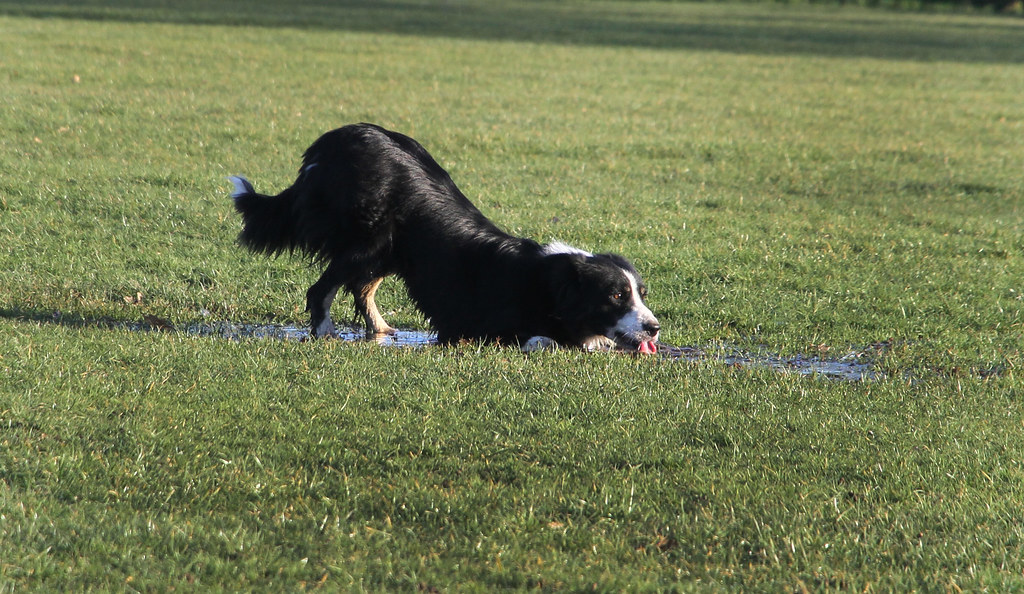How To Calm A Dog In Car ?

How To Calm Dog In Car :-Ensuring a smooth and enjoyable car ride with your dog is crucial, especially if your furry friend tends to get nervous in vehicles. Whether it’s a short trip to the vet or a long road adventure, there are strategies to ease your dog’s anxiety and make the journey more pleasant for both of you. If you’re committed to bringing your dog along on your travels, it’s essential to address and manage their nervousness in the car effectively. Here are some helpful tips to consider:
1. Gradual Exposure: Start by introducing your dog to the car gradually. Begin with short, positive experiences such as sitting in the parked car with treats and praise. Slowly increase the duration and intensity of the car rides as your dog becomes more comfortable.
2. Create a Comfortable Environment: Make the car a welcoming space for your dog by adding familiar blankets, toys, and bedding. Consider using a pet carrier or a seat belt harness for added security and comfort.
3. Associate Car Rides with Positive Experiences: Pair car rides with enjoyable activities such as trips to the park, playtime, or tasty treats. This will help your dog develop positive associations with being in the car.
4. Use Calming Aids: Consider using calming aids such as pheromone sprays, calming treats, or herbal supplements to help relax your dog during car rides. Consult with your veterinarian to determine the best options for your pet.
5. Practice Relaxation Techniques: Teach your dog relaxation techniques such as deep breathing exercises or simple commands like “sit” or “stay” to help them remain calm during car rides.
6. Take Breaks: Plan frequent breaks during long car trips to allow your dog to stretch their legs, relieve themselves, and decompress. This will help prevent overstimulation and reduce anxiety.
7. Seek Professional Help if Needed: If your dog’s nervousness in the car persists despite your efforts, consider seeking guidance from a professional dog trainer or behaviorist. They can provide personalized strategies and techniques to address your dog’s specific needs.

By implementing these tips and strategies, you can help your dog overcome their nervousness in the car and enjoy safe and stress-free travels together. With patience, consistency, and positive reinforcement, you can turn car rides into enjoyable adventures for both you and your furry companion.
What Causes Car Anxiety in Dogs?
There are several reasons why a dog may develop a fear or aversion to car rides. For instance, if a dog has been abandoned or experienced traumatic events associated with car rides, they may associate the car with negative experiences. Similarly, if a dog’s only car rides lead to unpleasant destinations like the vet’s office or a boarding facility, they may develop anxiety about getting into the car.
Additionally, some dogs simply find the car to be a scary or uncomfortable place due to factors such as unstable footing, sudden movements, loud noises, or overwhelming stimuli. For puppies, car sickness can also contribute to a negative association with car rides, making the experience unpleasant even if they otherwise enjoy being outside the home.
It’s important to recognize that not all dogs will naturally enjoy car rides, and it’s perfectly normal for some dogs to feel anxious or fearful in this environment. Understanding your dog’s individual needs and preferences can help you address their fears and make car rides a more positive experience for them.
Overcoming Dog Car Anxiety
If your dog finds the car intimidating, it’s essential to address their fear gradually and patiently. Here’s a step-by-step guide to help your dog overcome their fear of the car:

Step 1: Approach the Car with Positive Reinforcement
Start by walking towards the car with your dog and reward them with a small, high-value treat for approaching. Repeat this step until your dog is comfortable and happy to approach the car.
Step 2: Familiarize Your Dog with the Car
Open the car door and reward your dog for approaching. Repeat this step several times to help your dog become familiar with the car’s presence.
Step 3: Encourage Exploration
Encourage your dog to investigate the car on their own by placing high-value treats inside. Start with treats near the door and gradually encourage your dog to explore further inside the car.
Step 4: Gradually Introduce Closing the Door
Once your dog is comfortable near the car, encourage them to enter, close the door for a brief moment, and then open it again to reward your dog. Repeat this step, gradually increasing the duration of time with the door closed.
Step 5: Associate Positive Experiences with Sitting in the Car
Encourage your dog to enter the car and remain calm while you sit in the front seat. Reward your dog for calm behavior and gradually introduce starting the car while continuing to reward positive behavior.
Step 6: Take Short Drives
Start with very brief drives, such as around the block, and gradually increase the distance as long as your dog remains relaxed. Reward your dog after each drive and gradually extend the duration of the trips.
By following these steps and providing plenty of positive reinforcement, you can help your dog overcome their fear of the car and make car rides a more enjoyable experience for both of you. Remember to be patient and consistent, and tailor the training to your dog’s individual needs and comfort level.
Preventing Dog Motion Sickness
Puppies are more prone to experiencing motion sickness in the car compared to adult dogs. While many puppies outgrow this tendency as they mature, some may continue to struggle with motion sickness or anxiety during car rides. Here are some tips to help ease your dog’s discomfort:

1. Maintain a Cool Temperature:- Keep the interior of the car cool by adjusting the air conditioning or opening windows to provide fresh air circulation.
2. Provide Fresh Air:- Lowering the windows can help provide fresh air and alleviate feelings of nausea or discomfort.
3. Limit Food and Water Intake:- Consider limiting your dog’s food and water intake for a few hours before the trip to help reduce the risk of motion sickness.
4. Consult Your Vet:- Talk to your veterinarian about motion sickness medication or anti-anxiety medication that may help alleviate your dog’s symptoms. Your vet can recommend the most suitable options based on your dog’s health and individual needs.
5. Exercise Before the Trip:- Engage your dog in a short exercise session, such as a brisk walk, about twenty minutes before the trip. Physical activity can help reduce stress and anxiety, making the car ride more comfortable for your dog.
6. Use Dog Pheromones:- Consider using dog pheromones in the car to create a calming environment. Available in various forms such as collars, diffusers, and sprays, these pheromones mimic the calming scent of a nursing mother dog and can help relax dogs of all ages.
By implementing these strategies and seeking guidance from your veterinarian, you can help alleviate your dog’s motion sickness or anxiety and make car rides a more pleasant experience for both you and your furry companion.




